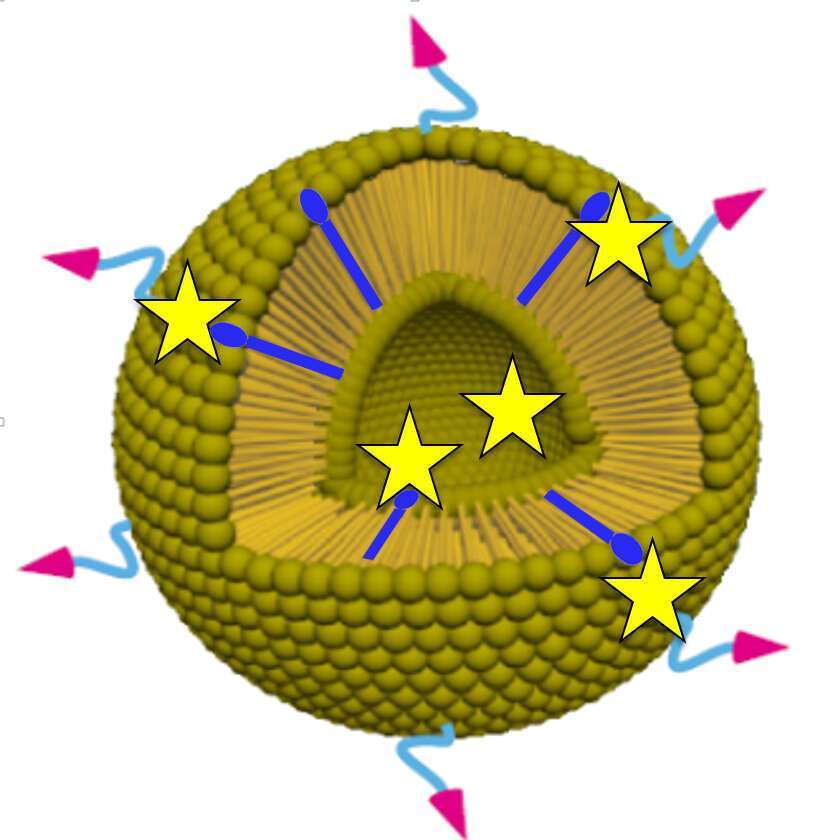
DEVELOPMENT OF SMART DRUG DELIVERY SYSTEMS FOR TREATING FABRY DISEASE
2Material Science-Nanomol Group, CSIC-CIBER-BBN, Barcelona, Spain
Fabry is a genetic lysosomal disorder caused by deficiency in the enzyme α–galactosidase A (GLA), which provokes glycosphingolipid Gb3 accumulation in cells, causing heavy renal, cardiac and cerebrovascular pathologies. The available treatment, based on enzyme replacement therapy, is intravenous infusion of an exogenous enzyme1.
Within the framework of the Smart–4–Fabry EU project we develop a novel formulation based on self–assembled nano–vesicles containing recombinant GLA5, designed to improve many disadvantages of existing treatment such as short plasma circulation half–life, high immunogenicity response, and limited efficacy.
The liposomes are composed of DPPC, cholesterol and conjugated cholesterol–PEG–RGD for crossing the BBB. For better GLA entrapment, a quaternary ammonium surfactant, miristalkonium chloride (MKC) was introduced. After preparation, diafiltration was performed to wash out non–encapsulated GLA.
Here we focus on the contribution of cryogenic electron microscopy to analyzing the nanostructure and optimizing the GLA–nanoformulation. In particular, cryo–TEM assisted in understanding the effects of parameters such as cholesterol concentration, MKC content, PEG chain length, enzyme concentration, GLA type and diafiltration on the structure and stability of the nanovesicles. Further, cryo–TEM analysis disclosed the reason and enabled to solve unexpected increase in toxicity found upon aging in preclinical experiments done within the project.

1. Setareh, A.; Alhussain, S.; Jason, M. N.; Fahad, S.; Anjay, R.; J. Pharmacol. Clin. Toxicol. 2015, 3(3):1051. A Review of Current and Future Treatment Strategies for Fabry Disease: A Model for Treating Lysosomal Storage Diseases.
2. Cabrera, I.; Abasolo, I.; Corchero, J.L.; Elizondo, E.; Gil, P.R.; Moreno, E.; Faraudo, J.; Sala, S.; Bueno, D.; Gonzalez–Mira, E.; Rivas, M.; Melgarejo, M.; Pulido, D.; Albericio, F.; Royo, M.; Villaverde, A.; Garcia-Parajo, M.F.; Schwartz Jr., S.; Ventosa, N.; Veciana J. Adv. Healthc. Mat. 2016, 5, 829-840. Alpha-galactosidase-a loaded-nanoliposomes with enhanced enzymatic activity and intracellular penetration.
Powered by Eventact EMS